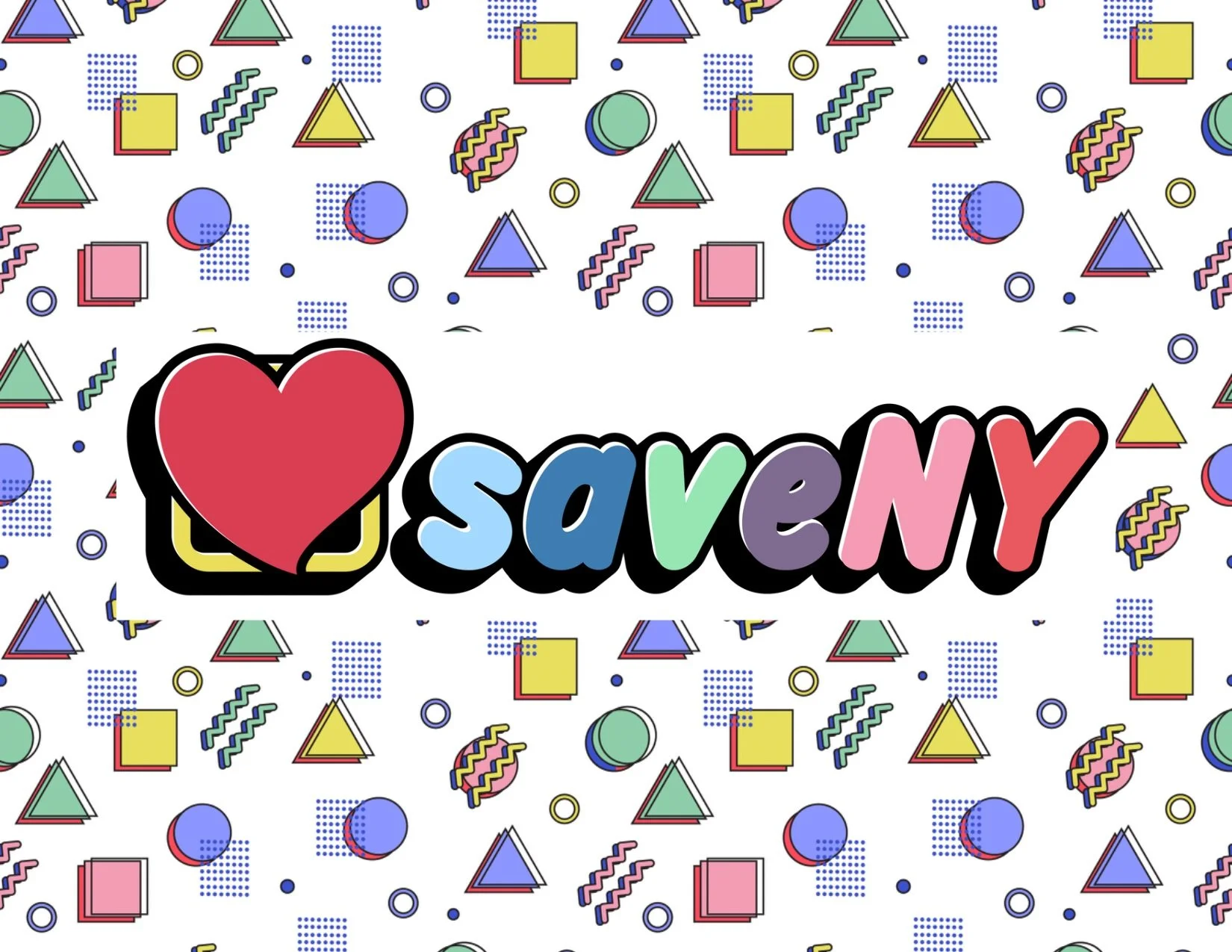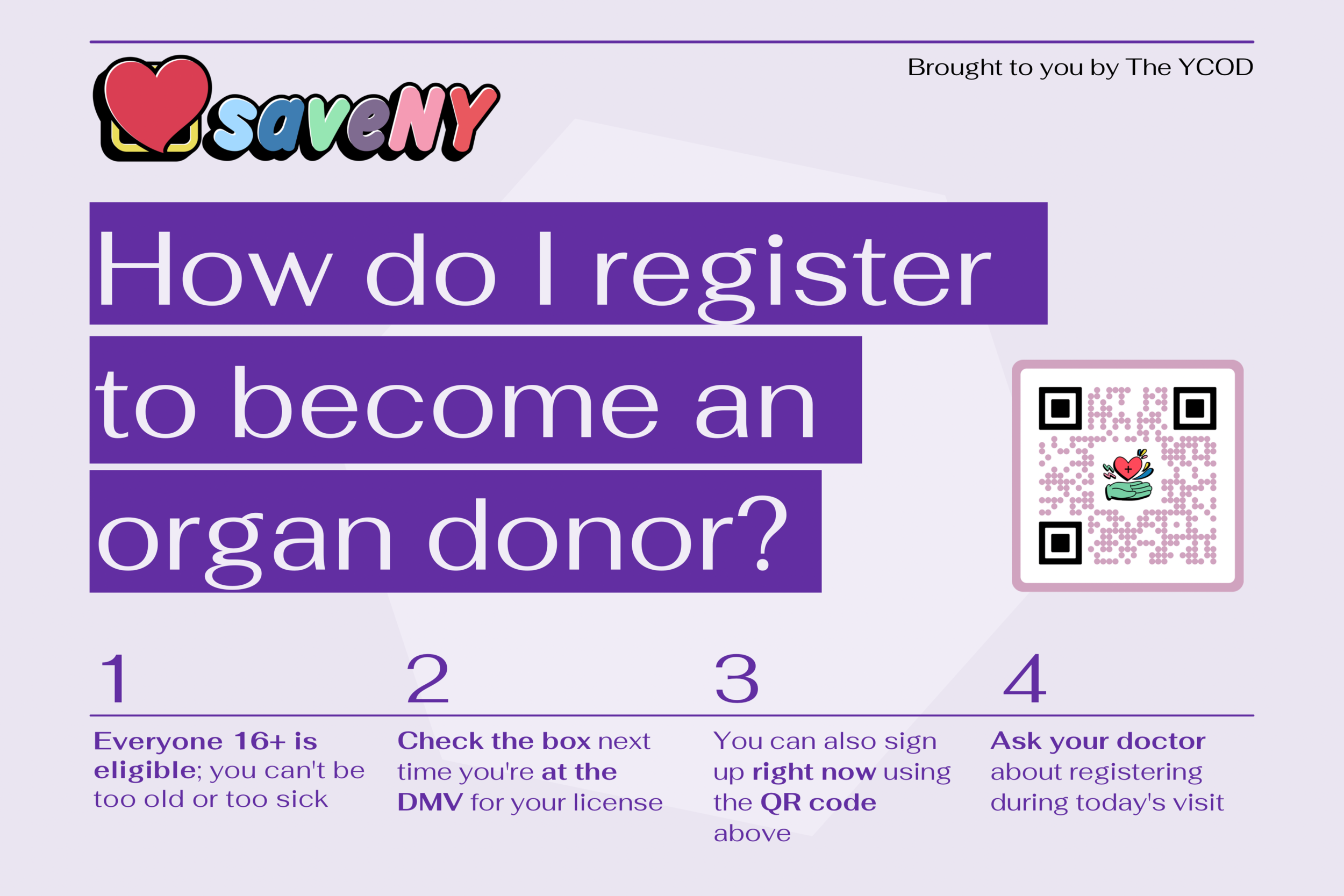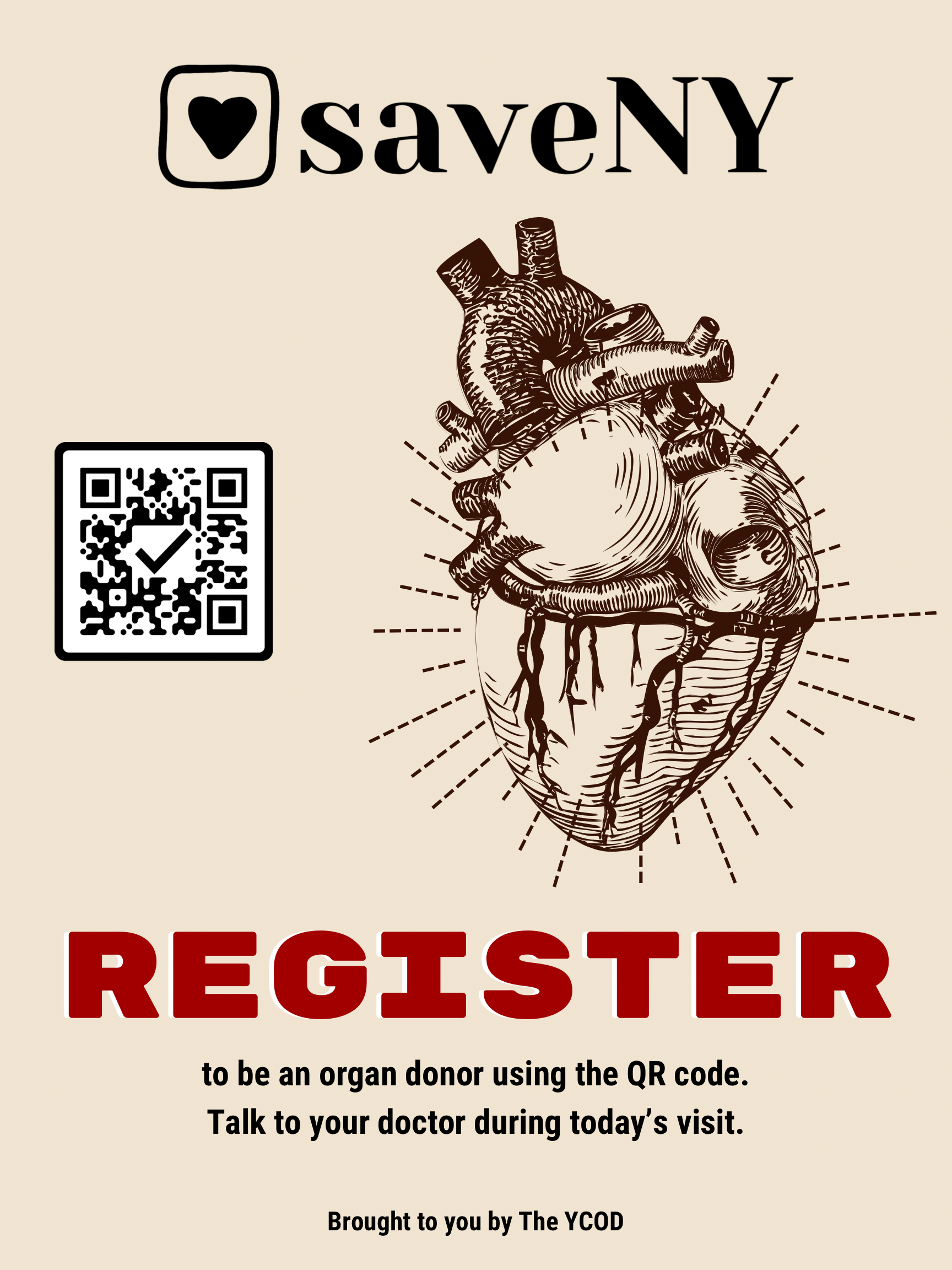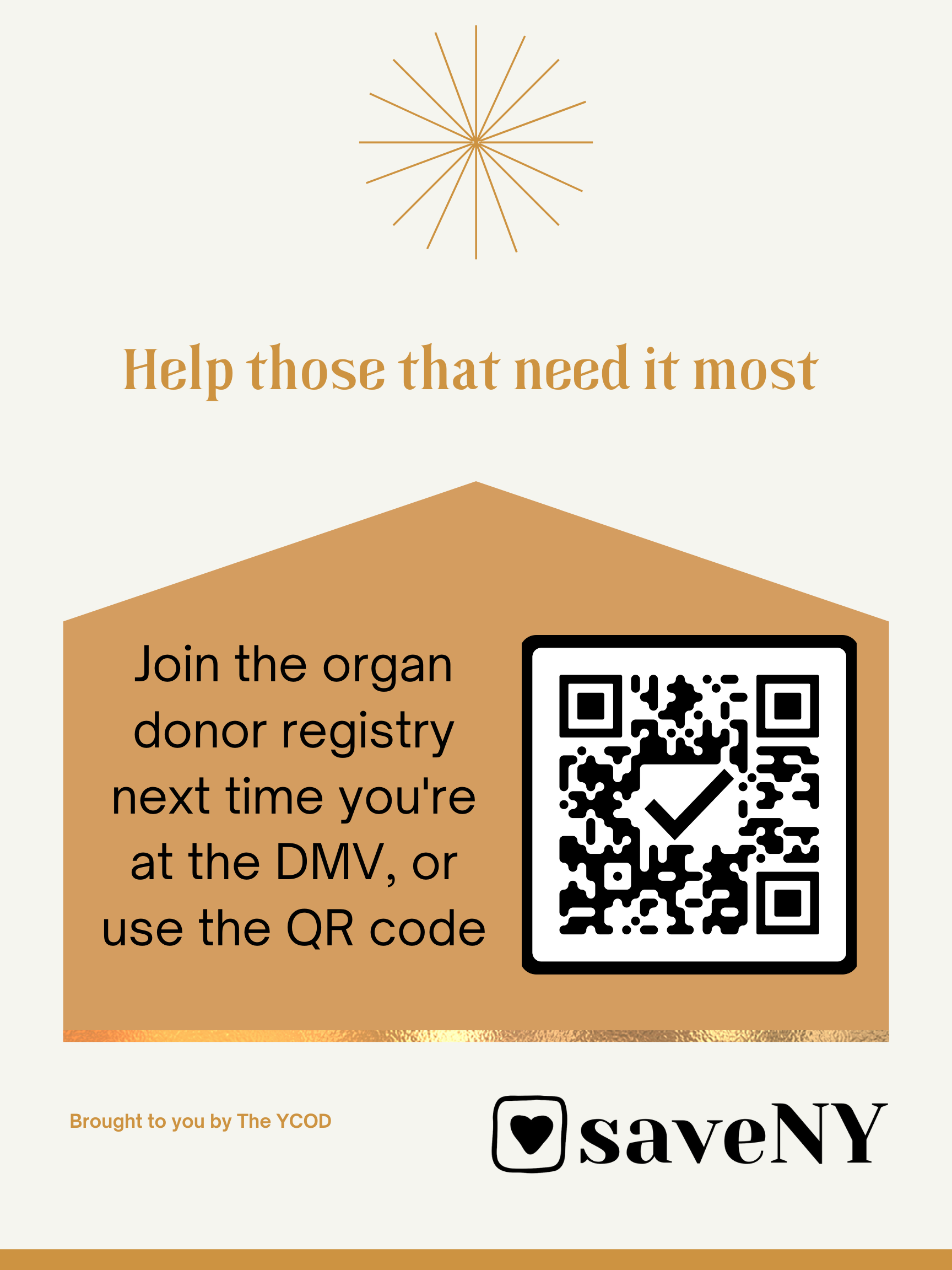Informational Campaign
Background
The rate of organ and tissue donor designation in New York is currently 42%, the lowest of any state. A study from 2015 highlighted the lack of awareness around organ donation in New York, and suggested an increased educational and advertising campaign as a potential solution. The lack of awareness particularly fails people of color, giving New York State one of the lowest ratios of organ and tissue donation designation to white residents in the US. Currently, most donation decisions are made in the DMV, and motorists lack a firm background of knowledge on donation. Most New Yorkers, especially those of color, would prefer to discuss donation with their primary care physician. Bloom Works found that New York State could save thousands of lives and hundreds of millions of dollars by modernizing and improving education for organ donation.
The following campaign addresses the lack of brand recognition faced by organ and tissue donation, provides data-driven guidance for increasing the rate of donor designation, and identifies means to increase the equity in organ donation for people of color. By reaching New Yorkers in places they’re comfortable, like primary care offices, the Campaign will take firm, measured steps towards public recognition of donation in specific regions of NY — and the state at large.
Overview
Resources to share the 💟 saveNY Campaign will be provided to places of worship within the community, as to increase the positive community feelings felt towards the gift of life. No religion stands against organ donation, as all view it as a gift of love. Materials will focus on kindness, caring for members of the community, and stories of hope.
Doctors offices are where New Yorkers of color — and all New Yorkers — feel most comfortable discussing organ donation decisions. The 💟 saveNY Campaign’s third stage will include signage for use in primary care offices to encourage the necessary dialogue around organ donation and giving the gift of life. These signs will focus on statistics and data, and will be printed in such a way that makes them desirable to read while waiting in a waiting area or in an office setting. Updated each year, the signs will include relevant and interesting statistics for discussion in a primary care setting, as well as basic directions on signing up at the DMV and through the NYS web form.
County and local governmental offices and buildings — including licensing offices and senior centers — are an easy location for public health promotional material, like those in the campaign. These locations particularly benefit from catchy, bright, and easy-to-notice signage in settings that may be busy during peak hours.
Logo and Tagline
The design of the Campaign is unique to a public health discussion, and is necessary for the potential reach. The 💟 saveNY tagline is to be open to all public health agencies in the state, including county and local departments of health, Donate Life of New York State, and the OPOs across the regions of New York State.
As the logo and tagline are open to modification and reuse, the message of the 💟 saveNY Campaign will be reinforced by the individual OPOs, state offices, county health departments, and local agencies that utilize the messages outlined in the guidebook to increase brand awareness.
OPOs across the state will be provided with basic guidance on how they can incorporate the messaging into their materials and communities, with the goal of making the campaign clear across multiple regions. As the marketing materials do not contain font, color, or icon requirements, OPOs are encouraged to use their own brand material to continue the message in their community in a means consistent with prior communications and advertisements.
The logo and tagline will have few requirements, as outlined below, with the goal of making the logo accessible and widespread. Remixing and reusing the logo and tagline will be the standard, rather than an unwanted outcome of an internet age. As shown here, the logo and tagline can be used in a multitude of settings, and the exact logo file need not be used in all documents.
The following requirements will apply to the tagline and logo:
The tagline text will always contain a minimum of the tagline “save;” followed by “NY,” or a region, ex. “WNY,” UPSTATE,” etc.
The text of the tagline will always be either all lowercase or all capital letters;
The tagline will always be accompanied by some visual representation of a box being marked with a heart;
All uses of the tagline will include directions on how to join the organ donation registry;
End of Campaign
The Campaign will conclude once the NYS donor designation rate reaches 75%. New to the program, following this milestone, material will be distributed with the “💟 savedNY” text.
At this point, a review of resources and successful marketing efforts to this point is to be produced by The YCOD, for use by participants and The YCOD in informing future efforts. A review of funding and successes will also be produced, with the goal of applying for external county, state, and federal funding to support the outlined mission. External grant opportunities will be explored, if the first stages are successful.
Updated material will be distributed to primary care doctors, county offices, and places of worship one final time, using less trend-following graphics, as to avoid the material becoming dated over the decades it may remain presented.
If the statewide rate of donor designation drops more than 10% from the peak at which the campaign was stopped, the campaign will resume with updated materials.





